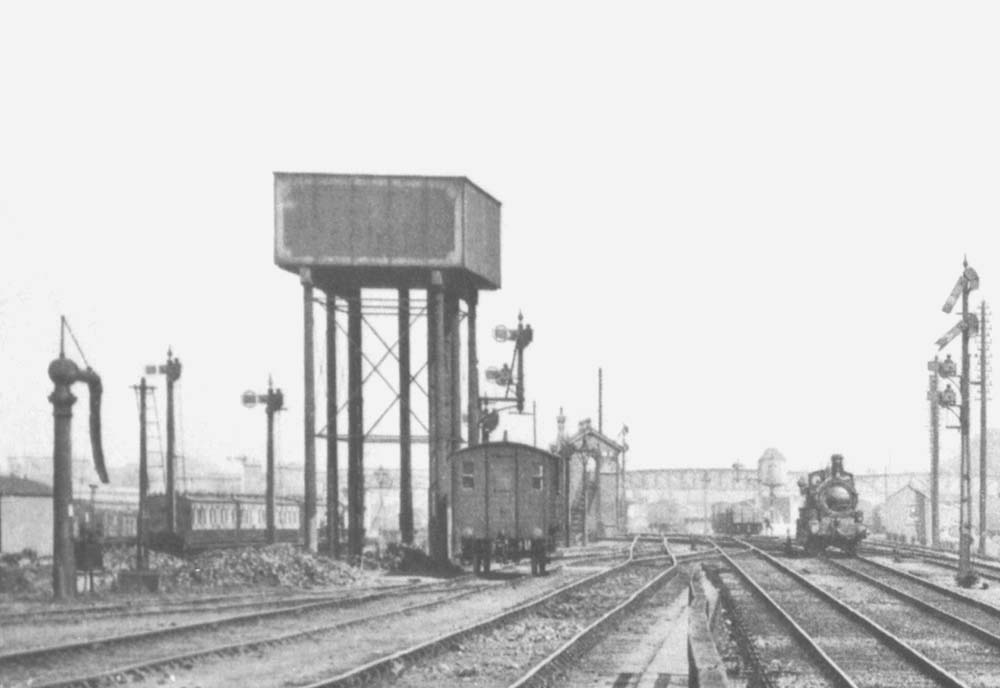|
|
 |
 |
|
GWR Route: Banbury to Wolverhampton
Leamington Spa Station: gwrls237a
 |
Close up of image 'gwrls237' showing the approach road to
the original locomotive shed and the standard GWR water tank. The shed would
have been behind and to the left of the photographer although by the time the
photograph was taken it had been destroyed by fire. The existence of coaching
stock may indicate that the photograph was taken prior to September 1906 when
the new shed and carriage sidings were opened south of the station. In between
the water crane and water tank is a pile of material which because of its size
is probably coal. This is the area recorded on the 1886
OS map and the 1901 schematic drawing where the
coaling stage was sited. The absence of the coaling stage in the photograph,
described as being built with stone walls and timber decking and some 40 feet
long and 14 feet 10 inches wide, would indicate that it has been removed,
perhaps being superceded by the 1906 shed. Loading the coal in to the tender or
bunker of locomotives was very laborious involving men off-loading coal from
wagons to the stage and then when required, shovelling the coal from the stage
into the bunker or tender.
There were two roads accessing the shed, both commenced from
the line running alongside the North signal box (seen above) with one line
running to the left of the water tank and the other running to the right before
curving away to the left past the water crane. The line that ran to the left of
the water tank was intersected by the turntable which would have been located
the other side of the water crane. In the middle of the photograph is a timber
rail denoting the limits of the shed. In the distance can be seen the passenger
footbridge and a 'parachute' water tank. The locomotive running on the down
line is thought to be a GWR 2-4-0 which has been given the right away to run
light engine.
The van standing alongside the water tank is a guards van.
Robert Ferris writes, 'The end nearest the camera is the non-veranda
side of a GW standard brake van (telegraphic code name TOAD). The central
position of the stove pipe chimney stack makes it a diagram AA11 or earlier
(AA12 onwards had a off set stack). I can see no other distinguishing features
to tie it down further. The AA11 or earlier diagram dates it to pre-1913. The
most common TOAD in this period was the diagram AA3 of which 840 were built
between 1889 and 1901, but there were two types a 16 ton and a 20 ton version.
The weight was made up by loading scrap iron as ballast weight into the hollow
chassis, so the external design was identical'.
 back back

|
|
|
